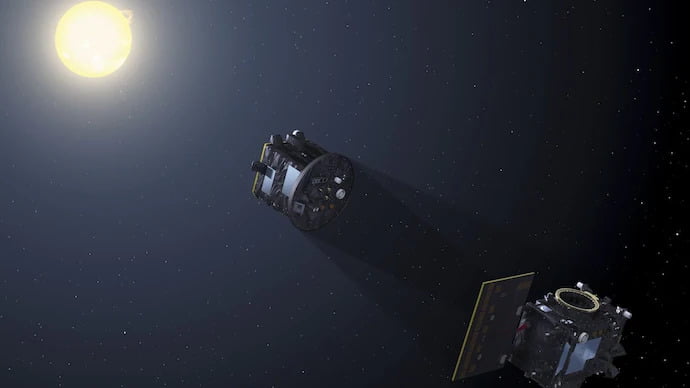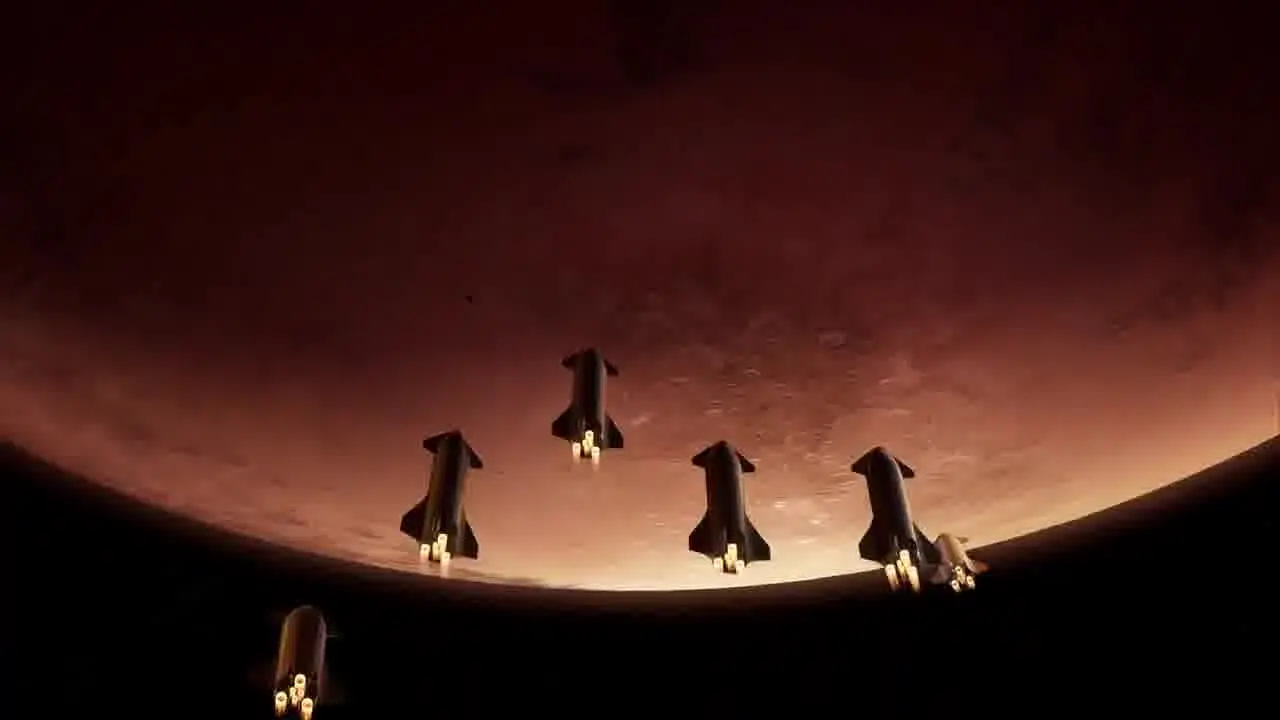The European Space Agency (ESA) and the Indian Space Research Organization (ISRO) are set to launch the Proba 3 mission by September this year. This mission aims to create humanity’s first ‘Artificial Solar Eclipse’ to study the sun’s corona more deeply.
Mission objectives
The observations made by the Proba 3 mission will be extremely beneficial to the scientific community since they will supply us with additional information on the sun’s corona.
But why study the Corona? To answer this question, we must first understand the sun.
The sun’s visible layers are separated into three sections: the photosphere, the chromosphere, and the outermost corona.
The photosphere is the brightest, with temperatures reaching up to 5500 degrees Celsius. This component of the sun emits the light that reaches us. The chromosphere, a small layer between the photosphere and the corona, can reach temperatures of up to 4300 degrees Celsius. The Corona is next up.
The Corona is the outermost layer, thus it is much fainter than the other layers. This makes it more difficult to view because the photosphere’s brightness blinds observers. Understanding Corona will help us comprehend solar flares, solar winds, solar storms, and all other types of space weather.
Technical details of Proba-3 mission
The Proba 3 is a one-of-a-kind mission developed in collaboration by ESA and ISRO. This effort began in 2005 as an initiative. This mission will be launched aboard the PSLV-XL rocket, a powerful rocket developed by the Indian Space Research Organization.
The Proba 3 mission involves precision formation flying, whereas the Sun Corona observation mission comprises of two independent spacecraft flying 144 meters apart.
One of the spacecraft has a telescope that will point at the sun, while the other has an occulting disc. Formation flying entails placing the disc in front of the telescope such that the bright inner section of the sun is obscured, displaying the much fainter region of the sun.
Challenges faced by Proba-3 mission
This formation flying is intended to be precise and accurate. Both spacecraft’s locations must be millimeter-accurate with pointings of thousands of degrees. All of this placement is significantly more difficult when the spacecraft is flying at 1-10 kilometers per second.
Aside from that, the spacecraft have individual processing capabilities, which require them to align themselves without base help or human interference.
Furthermore, the Proba 3’s orbit is important because the spacecraft will generate an artificial eclipse lasting 6 hours, which will require them to communicate with one another and coordinate themselves to carry out the 6-hour solar corona study.
More about the Sun
- The Sun is a plasma ball present at the center of our solar system. It is composed of Hydrogen and Helium and creates energy using nuclear fusion.
- The fusion process converts Hydrogen into Helium releasing huge amounts of light and heat energy. This energy sustains life on Earth and influences the Climate and Weather.
- The sun’s core can reach temperatures of up to 15 million degrees Celsius. It has a diameter of approximately 1.39 million kilometers making it 100 times wider than Earth. The Sun’s magnetic activity causes sunspots, solar flares, solar winds, and other phenomena that affect space weather.
- Sun is a G-type dwarf star. It is 4.9 billion years old and has reached the middle of its life cycle and would continue to live 5 billion years more until it becomes a red giant star and eventually a white dwarf.
Conclusion
The Proba 3 mission marks a significant milestone in our understanding of the Sun and space weather. This mission will provide detailed information about the Sun’s less-explored region of Corona. Furthermore, as the first formation flying mission, it would serve as an inspiration for many subsequent missions and pave the way for more of the same.
ESA’s Proba 3 is scheduled to fly on ISRO’s PSLV rocket by the end of 2024. With cutting-edge technology and a fresh concept that took years to develop, everyone will be focused on this mission and hoping for its success.




